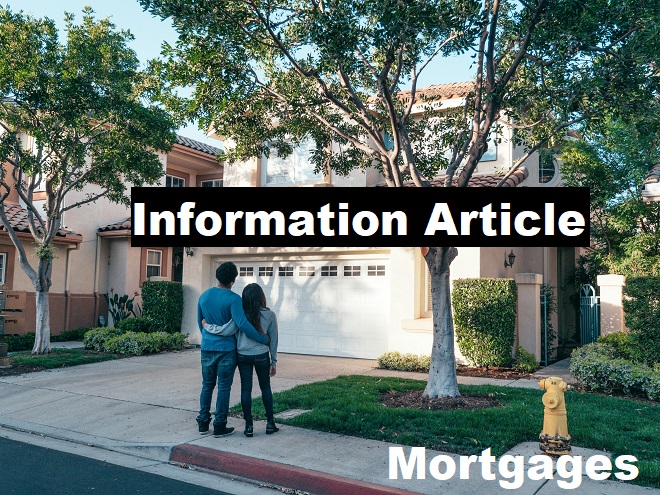Introduction
Adjustable-rate mortgages (ARMs) have become a popular choice among homebuyers and real estate investors, especially in an environment of fluctuating interest rates. Unlike traditional fixed-rate mortgages, ARMs offer an initial period of lower interest rates, which can adjust periodically based on market conditions. This type of mortgage is particularly relevant today as borrowers seek to optimize their financial commitments in a dynamic economic landscape. Understanding the ins and outs of ARMs, including their benefits, risks, and how they compare to fixed-rate mortgages, is essential for making informed decisions.
What is an Adjustable-Rate Mortgage?
An adjustable-rate mortgage (ARM) is a type of home loan with an interest rate that can change periodically. These adjustments are based on changes in a corresponding financial index that’s associated with the loan. ARMs are designed to offer lower initial interest rates compared to fixed-rate mortgages, providing potential savings during the early years of the loan.
Historically, ARMs became popular in the United States during the late 20th century as a way to make homeownership more affordable. The basic mechanics of an ARM involve an initial fixed-rate period, after which the interest rate can adjust at specified intervals. These adjustments can lead to either increases or decreases in monthly mortgage payments, depending on the movement of the index to which the ARM is tied.

Types of Adjustable-Rate Mortgages
Standard ARM
A Standard ARM typically features an initial fixed-rate period followed by periodic adjustments. Common versions include 3/1, 5/1, 7/1, and 10/1 ARMs, where the first number indicates the fixed-rate period in years, and the second number indicates how often the rate adjusts thereafter (usually annually).
Hybrid ARM
Hybrid ARMs combine features of fixed-rate and adjustable-rate mortgages. For example, a 5/1 ARM has a fixed interest rate for the first five years, after which the rate adjusts annually. This hybrid structure offers the stability of a fixed-rate mortgage initially, along with the flexibility of an adjustable rate later on.
Option ARM
Option ARMs provide borrowers with multiple payment options each month, including a minimum payment, an interest-only payment, a fully amortizing 15-year payment, and a fully amortizing 30-year payment. While this flexibility can be appealing, it can also lead to negative amortization if the minimum payment option is frequently chosen.
Interest-only ARM
Interest-only ARMs allow borrowers to pay only the interest for a set period (typically 5-10 years), after which they begin to pay both principal and interest. This can lower initial payments, but it may result in higher payments later when the interest-only period ends.
Key Terms and Concepts
Index
An index is a benchmark interest rate that reflects general market conditions. Common indices used for ARMs include the London Interbank Offered Rate (LIBOR), the Cost of Funds Index (COFI), and the Monthly Treasury Average (MTA). The chosen index significantly influences the adjustments in the interest rate.
Margin
The margin is a fixed percentage added to the index to determine the fully indexed interest rate for an ARM. For instance, if the index rate is 2% and the margin is 2.5%, the fully indexed rate will be 4.5%.
Initial Rate Period
This is the period during which the interest rate remains fixed at the start of the loan. It can range from one month to 10 years, depending on the specific ARM product.
Adjustment Period
The adjustment period is the interval between potential rate changes after the initial fixed-rate period. For example, in a 5/1 ARM, the rate adjusts annually after the first five years.
Caps
Caps are limits placed on how much the interest rate or payments can increase. Rate caps can be periodic (limiting changes per adjustment period), lifetime (capping the total interest rate increase over the loan’s term), or payment caps (limiting the amount the monthly payment can increase).
How ARMs Work
During the initial rate period, the interest rate on an ARM is fixed. Once this period ends, the rate adjusts based on the specified index plus the margin. The new interest rate is calculated by adding the margin to the current index value. This new rate then determines the monthly payment until the next adjustment period.
For example, if you have a 5/1 ARM with an initial rate of 3%, a margin of 2%, and the current index rate at the end of the fifth year is 2.5%, your new interest rate will be 4.5%. If your ARM has caps, these will limit how much your rate can change during each adjustment period and over the life of the loan.
Pros and Cons of Adjustable-Rate Mortgages
Advantages of ARMs
- Lower Initial Rates: ARMs typically offer lower interest rates during the initial fixed-rate period compared to fixed-rate mortgages, leading to lower initial monthly payments.
- Potential Savings: If interest rates decrease or remain stable, borrowers can save money over time.
- Flexibility: ARMs may be advantageous for borrowers who plan to sell or refinance before the adjustable period begins.
Disadvantages of ARMs
- Interest Rate Risk: Once the initial period ends, the interest rate can increase significantly, leading to higher monthly payments.
- Payment Uncertainty: The potential for fluctuating payments can make budgeting challenging.
- Complexity: Understanding the terms and mechanisms of ARMs can be more complex than fixed-rate mortgages.
Situations Where ARMs are Beneficial
ARMs can be beneficial for borrowers who expect to move or refinance within a few years, those who anticipate stable or declining interest rates, or individuals looking to take advantage of lower initial payments to allocate funds elsewhere.
Scenarios Where ARMs Might Be Risky
ARMs are risky for borrowers who plan to stay in their homes long-term without refinancing, those on fixed incomes, or in environments with rising interest rates, as they may face significant payment increases over time.
ARM Interest Rate Indices
Commonly Used Indices
- LIBOR (London Interbank Offered Rate): A widely used benchmark for setting rates on various financial products, including ARMs.
- COFI (Cost of Funds Index): Reflects the average cost of funds for savings institutions in the 11th Federal Home Loan Bank District.
- MTA (Monthly Treasury Average): Based on the average yield of U.S. Treasury securities adjusted to a constant maturity of one year.
How Indices Affect ARM Rates
The chosen index for an ARM directly influences the rate adjustments. For example, if the LIBOR index increases, the interest rate on a LIBOR-based ARM will likely increase as well, leading to higher monthly payments.
Trends in ARM Indices Over Time
Historical trends show that indices like LIBOR and COFI can fluctuate significantly based on economic conditions. Borrowers should understand these trends to anticipate potential changes in their ARM rates.
ARM vs. Fixed-Rate Mortgage
Key Differences
The primary difference between ARMs and fixed-rate mortgages is the stability of the interest rate. Fixed-rate mortgages offer a consistent rate and payment throughout the loan term, while ARMs feature variable rates after an initial fixed period.
Comparative Benefits
ARMs offer lower initial rates and payments, which can be beneficial in the short term. Fixed-rate mortgages provide long-term stability and predictability, making them preferable for risk-averse borrowers.
Situations to Choose ARM Over Fixed-Rate
- Short-term Ownership: If you plan to sell or refinance within a few years.
- Interest Rate Decline: When you expect interest rates to fall or remain stable.
- Budget Flexibility: If you can handle potential payment increases.
Situations to Choose Fixed-Rate Over ARM
- Long-term Ownership: If you plan to stay in your home for many years.
- Rate Stability: When you prefer predictable monthly payments.
- Risk Aversion: If you are uncomfortable with the possibility of rising rates.
Financial Considerations
Budgeting with an ARM
Budgeting with an ARM requires understanding potential payment changes. Borrowers should plan for the highest possible payment under the rate caps to avoid financial strain.
Long-term Financial Planning
Consider the long-term implications of an ARM, including how rising rates might affect your financial goals. Plan for the possibility of refinancing or selling the home before significant rate adjustments.
Impact on Credit Scores
Timely payments on an ARM can positively impact your credit score. However, missed payments due to unexpectedly high rate increases can harm your credit profile.
ARM Loan Examples
Case Study of a 5/1 ARM
A 5/1 ARM with an initial rate of 2.5% for the first five years may adjust to 4.5% in the sixth year if the index rate is 2.5% and the margin is 2%. This case study explores how the borrower’s payments change over time and the financial impact of these adjustments.
Case Study of a 7/1 ARM
A 7/1 ARM initially fixed at 3% for seven years might adjust to 5% in the eighth year based on a 3% index rate and a 2% margin. This example illustrates potential savings during the fixed period and the risk of higher payments later.
Real-world Scenarios and Outcomes
Real-world scenarios show that ARMs can be advantageous in stable or declining interest rate environments, but they pose risks during periods of rising rates. Borrowers must weigh these scenarios when choosing an ARM.
Risks and Mitigations
Interest Rate Risk
Interest rate risk is the possibility of significant increases in monthly payments due to rising interest rates. This risk can be mitigated by selecting ARMs with rate caps and understanding the terms of the loan.
Payment Shock
Payment shock occurs when the monthly payment increases significantly after the initial fixed period. Borrowers can prepare by saving during the initial period and opting for ARMs with gradual adjustment caps.
Strategies to Mitigate Risks
- Choosing ARMs with Caps: Select loans with rate and payment caps to limit exposure to increases.
- Refinancing Options: Plan to refinance if interest rates rise significantly.
- Budgeting for Higher Payments: Save and budget for potential increases in payments.
Refinancing an ARM
When to Consider Refinancing
Refinancing an ARM may be advantageous when interest rates are low, before a significant rate adjustment, or to switch to a fixed-rate mortgage for stability.
Process of Refinancing an ARM
Refinancing involves applying for a new loan, often with a different interest rate and terms. The process includes appraisal, credit checks, and closing costs.
Costs and Benefits of Refinancing
Refinancing can lead to lower monthly payments, a more stable rate, or accessing home equity. However, it also incurs costs like closing fees and requires a good credit profile.
Regulatory Environment
Key Regulations Affecting ARMs
Regulations such as the Dodd-Frank Wall Street Reform and Consumer Protection Act impact ARMs by enforcing stricter lending standards and enhancing borrower protections.
Consumer Protections in Place
Consumer protections include mandatory disclosures, rate caps, and guidelines for fair lending practices to ensure borrowers understand the terms and risks of ARMs.
Impact of Regulatory Changes on ARMs
Regulatory changes can affect the availability, terms, and attractiveness of ARMs. Staying informed about these changes helps borrowers make educated decisions.

ARM and the Housing Market
Role of ARMs in Housing Market Trends
ARMs play a significant role in housing market dynamics by making homeownership more accessible during periods of high fixed rates. They can also influence demand and home prices.
Impact on Home Prices and Demand
The availability of ARMs can drive up home prices and demand by allowing more buyers to afford homes during the initial lower-rate period. Conversely, rising rates can dampen demand.
ARM Trends During Economic Cycles
ARM popularity tends to rise during periods of low-interest rates and decline when rates are high. Understanding these cycles helps borrowers time their mortgage decisions.
Common Misconceptions about ARMs
Misunderstandings about Rate Adjustments
Many borrowers misunderstand how rate adjustments work, assuming rates will always rise significantly. Educating borrowers on caps and index trends can clarify these misconceptions.
Clarifying the Risk Factors
Highlighting the specific risk factors, such as interest rate volatility and payment shock, helps borrowers make informed choices and prepare adequately.
Debunking Myths about ARMs
Myths such as ARMs being suitable only for short-term loans or always leading to negative amortization need addressing. Proper understanding dispels these myths and informs better decisions.
Choosing the Right ARM for You
Factors to Consider
Consider your financial stability, risk tolerance, and plans for homeownership duration. Evaluate how potential rate changes align with your long-term financial goals.
Questions to Ask Lenders
- What is the initial interest rate?
- How long is the fixed-rate period?
- What is the index and margin?
- What are the rate and payment caps?
- Are there any prepayment penalties?
Evaluating Different ARM Products
Compare different ARM products based on their terms, rates, and adjustment features. Use online calculators and consult with mortgage professionals to find the best fit.
Expert Insights
Quotes from Mortgage Experts
“ARMs can be a powerful tool for borrowers who understand and plan for the risks. They offer initial savings but require careful financial management.” – Jane Doe, Mortgage Specialist
Advice on Navigating the ARM Market
Experts advise understanding your financial situation, staying informed about market trends, and seeking professional advice to navigate the complexities of ARMs successfully.
Predictions for the Future of ARMs
Predictions suggest ARMs will continue to be an attractive option as long as interest rate volatility persists. Innovations in ARM products may offer more tailored solutions for borrowers.
Conclusion
Adjustable-rate mortgages offer a blend of initial affordability and long-term risk. By understanding their mechanics, benefits, and risks, borrowers can make informed decisions that align with their financial goals. Whether considering an ARM for its lower initial rates or exploring refinancing options, professional advice and careful planning are essential. Stay informed, ask the right questions, and choose the mortgage product that best suits your needs.
 Desi Serial
Desi Serial
